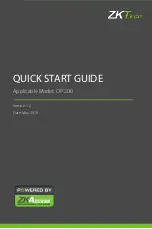
01/11
rev. 3/6/2017
LM, MANUAL
Copyright 2016 Vestil Manufacturing Co.
Page 26 of 28
Labels: the product should always be labeled as shown in the labeling diagram on p. 27. Replace any label
that is damaged, significantly faded, or not easily readable from a reasonable distance.
2. Annual performance evaluation: At least once per year, authorized personnel should lift a maximum rated load with
the boom. Afterwards, conduct a “Prior-to-use inspection”. Confirm that the product is in normal operating condition
before returning it to service.
Maintenance
:
Implement a maintenance program to ensure that the boom remains in normal operating condition. The following
steps should be utilized in conjunction with maintenance procedures applicable to fork truck attachments provided in
the most recent edition of ANSI B56.1.
Step 1: Tag the boom, “Out of Service.”
Step 2: Remove dirt and other matter from all surfaces.
Step 3: Conduct a “Prior-to-use” inspection (see p. 25). If severe deformities, corrosion, rusting, or excessive wear of
structural members is found, DO NOT use the product.
Step 4: Perform all necessary adjustments, replacements and/or repairs but DO NOT modify the boom.
DO NOT return the boom to service until all necessary adjustments and repairs are complete! There is
a significant difference between necessary adjustments and repairs, and modifications. An “adjustment” is a simple
correction that restores the boom to normal operating condition, such as tightening loose fasteners or removing dirt or
other debris from surfaces. Repair means removal of worn parts and installing replacement parts.
A “modification” is a change that alters the boom from original operating condition, like bending the structural
members or removing parts. NEVER modify the boom without the express, written approval of Vestil. Modifications
might make the boom unsafe to use and automatically void the Limited Warranty.
Step 5: Make a dated record of all repairs, adjustments, and replacements performed.



































